Texas Master Naturalist and Rio Grande Valley Chapter co-founder Frank Wiseman and I share both an interest in native plants and a love of words. Exceptionally fun are words naming phobias. Frank recently called my attention to the word, nomophobia that began life as an acronym for NO MObile Phone PhoBIA.
In reality, the term is used to describe a psychological condition when people have a fear of being detached from mobile phone connectivity. According to dictionary.cambridge.org, psychiatrists believe it may be linked to social anxiety disorder.
I seldom exit the house without my phone. When I do, I admit to a wee bit of anxiety, mainly because I might miss a photo opportunity. Equally as disturbing is when the phone isn’t in my hand ready to take a photo, like the other day. Not five feet from me, a new-to-my-yard bird was clinging sideways to the stalk of a Jann Miller Mauve Indian Mallow; the velvety, two-toned, slender green bird was repeatedly bobbing its head up and down, blending in with the color of the leaves and stalk of the plant. It was nearly unnoticeable but for the movement of the leaves on a windless afternoon. Its motion was so rapid and erratic I wasn’t sure if it was eating seeds from the mallow pods or eating bugs
I was so mesmerized it took a moment to register that a new bird was visiting and I’d better get a shot of it. Movement of extracting the phone from my back pocket, tapping the secret code, opening the photo app, aiming and taking the shot took long enough for the bird to discover my proximity and jet off. Scouring the image on my computer monitor later showed the bird as a flash of color just exciting the scene at the edge of the photo.
With the photo and a lengthy description of the bird and its activity, I unabashedly e-mailed a local birding expert to see what my new visitor might be. I got a quick reply: orange-crowned warbler. “They are thick this year,” my source said. While awaiting the reply, I’d paged through the warbler section of my Smithsonian Handbooks, “Birds of Texas,” Fred J. Alsop III, DK publishing, and tagged that as closest to the bird I’d seen on the mallow.
For those with incredible vision, the bird is at the left edge of the photo below, at midpoint.
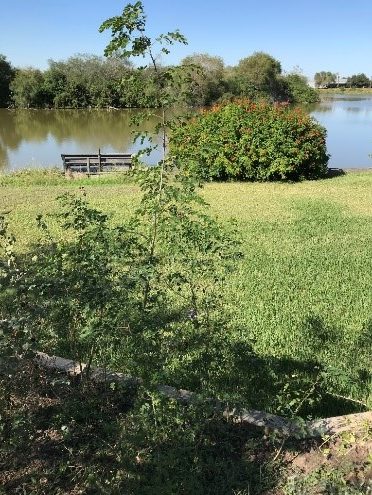
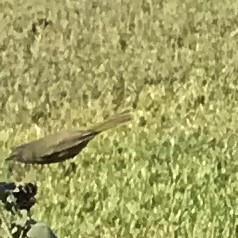
A couple of days later, I captured another photo that was identified as an orange-crowned warbler via iNaturalist.org.
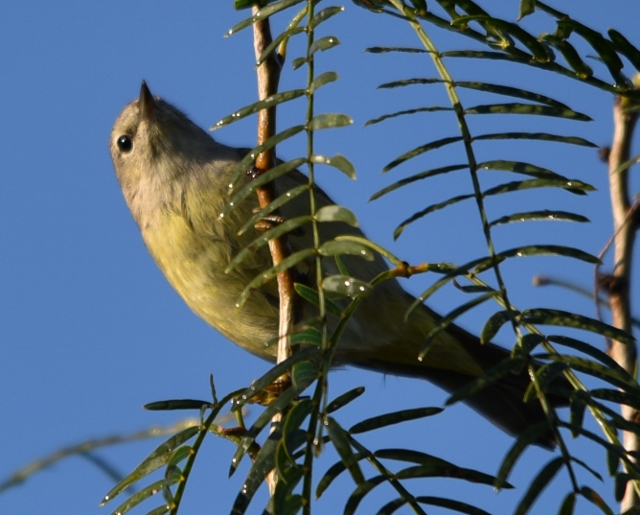
Orange-crowned warblers eat mostly insects and supplement their diet with berries, suet, tree sap, and flower nectar. The bird was most likely eating bugs, not seeds, on the Indian mallow.
The plant itself is notable. It’s included in the Dr. Alfred Richardson/Ken King “Plants of Deep South Texas,” Texas A&M University Press, page 303, Mauve Indian Mallow, Jann’s Indian Mallow, Abutilon hulseanum. Author comments: “This species was known only in Cameron County from old historic records. Recently a population in southern Willacy County was discovered by Jann Miller, a local native plant enthusiast. The flowers open in the afternoon. Preferring moist places, this would make an excellent landscape plant. The flowers are edible, making a pleasing garnish or addition to a salad. This is a host plant for Laviana white-skipper butterflies.”
For those with a butterfly or pollinator garden, this mallow blooms into the winter. It self-populates easily; young plants can be potted up and shared.
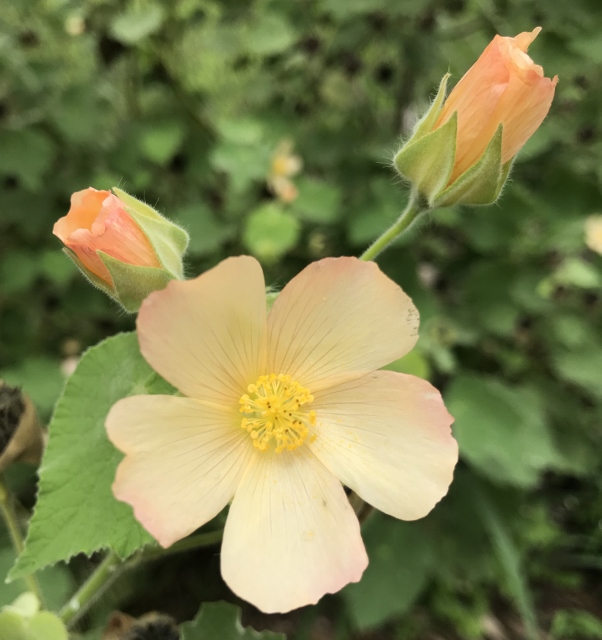
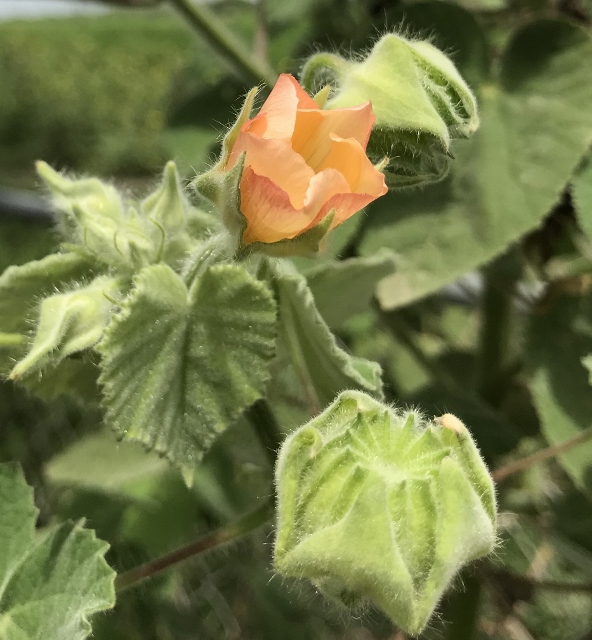
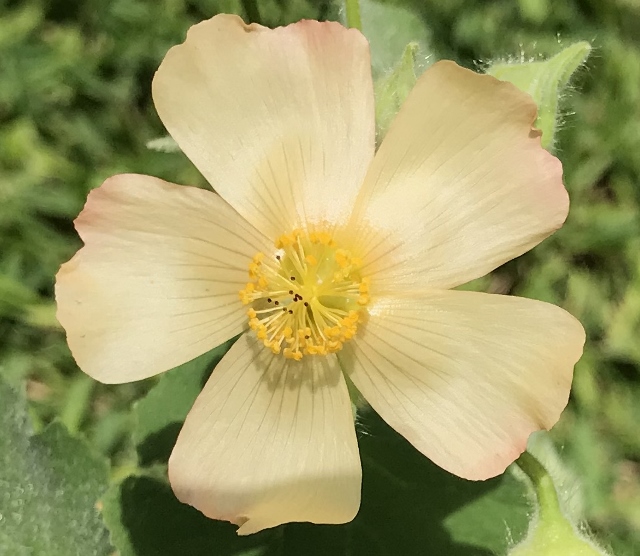
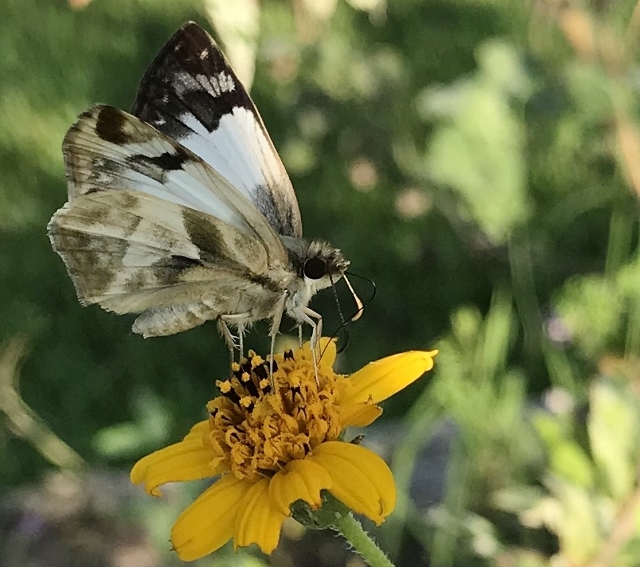
The Jann Miller Indian mallows are not without mystery. I successfully grew a couple of plants from a friend who was propagating seeds originally from Jann Miller (a member of the local Native Plant Project). I began collecting and sharing seeds as soon as my plants matured and seeds had ripened. However, the seed pods don’t just contain seeds. Most of the seed pods — on every plant — seem to have bugs! This summer, I was able to take copious photographs of the bugs in various stages.
Mystery solved via iNaturalist.org: Niesthrea louisianica and its larvae.
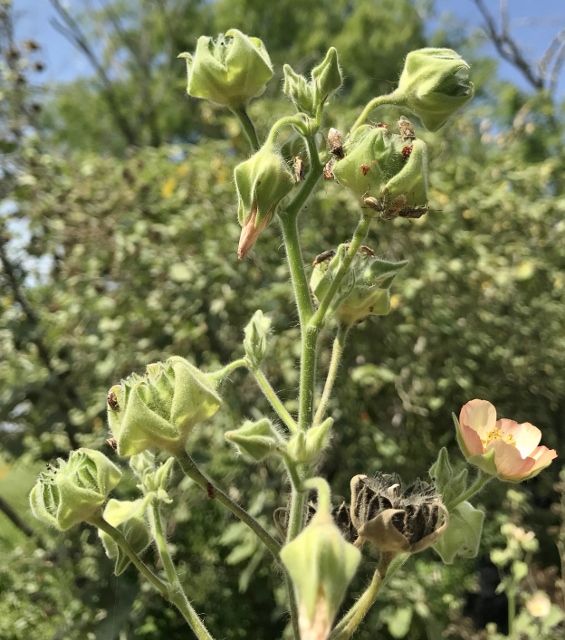
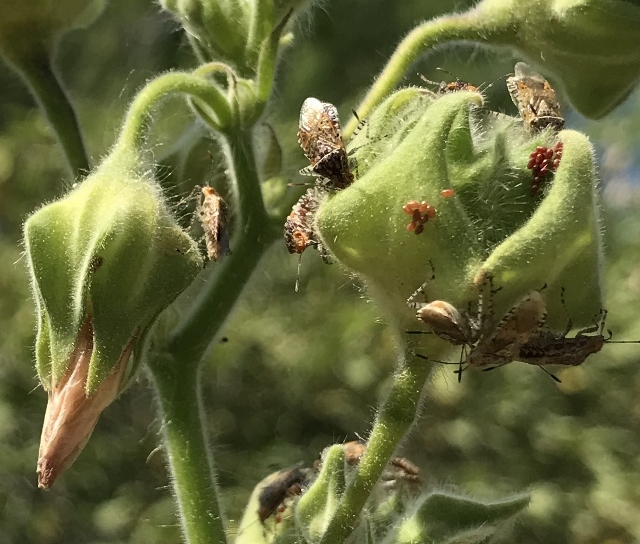
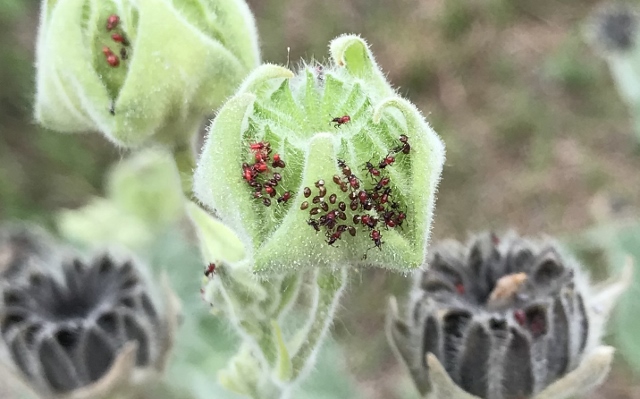
Niesthrea louisianica is in the family of Rhopalidae (Scentless Plant Bugs), tribe Niesthreini, genus Niesthrea. According to BugGuide.net, these bugs are 6.5 to 8.5 mm. (6.5 mm is 0.255 inches). They are colorful, varying from reddish to dark brown to grayish yellow and thickly sprinkled with dark spots. Hosts include hibiscus and other malvaceae family plants, like mallows.
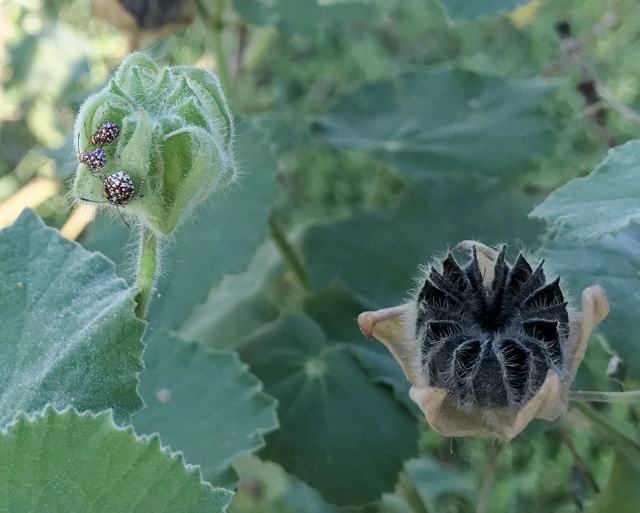
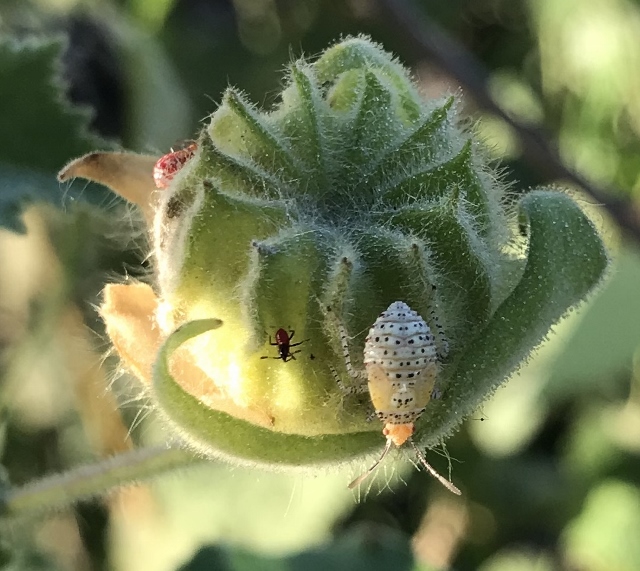
Here’s where it gets interesting. A quick Internet research revealed that N. louisianica is an important biocontrol agent of velvetleaf (Abutilon theophrasti). Without convoluting the information, these bugs, Niesthrea louisianica, are a friend to U.S. food crops and an enemy to the crop’s enemy: the (introduced) velvetleaf mallow.
According to a University of Wisconsin extension article, velvetleaf (Abutilon theophrasti) is a problem to our national food source. It’s an introduced plant to Canada and the lower 48 U.S. states; it’s on the invasive list at invasive.org and considered a noxious weed in several states. “It’s a particular problem in corn and soybean fields in the eastern and Midwestern U.S., costing hundreds of millions of dollars per year in control and damage. Abutilon theophrasti is an extremely competitive plant, stealing nutrients and water away from crops, thereby significantly reducing yields.”
Here’s the tie-in with the bugs in the Jann Miller Mauve Indian Mallow:
A bugoftheweek.com post states that the “beautiful Niesthrea lousianica bug turns the table and demonstrates how plant-feeding bugs sometimes become our allies when plants they attack are weeds. Throughout the corn and soybean growing regions of the U.S., an aggressive exotic weed called velvetleaf competes with our crops for nutrients and water. By attacking the pods of and killing developing seeds inside, this small bug plays an important role in reducing the numbers of noxious velvetleaf in many parts of the country. In one study more than 80,000 Niesthrea lousianica were raised and released in several Midwestern states. Near the points of release, Niesthrea lousianica made a serious dent in the viability of velvetleaf seeds.”
In spring, Niesthrea louisianica eggs are laid in masses of one to 36 on the undersides of leaves. Each female can lay more than 700 eggs. Newly hatched nymphs feed on flower buds and on previous year’s seed pods. The adults can overwinter in leaf litter on the ground. (One more point for not disturbing fallen leaves this time of year.)
For those who subscribe to the theory that for every action there is a reaction, there you have it!

Leave a Reply